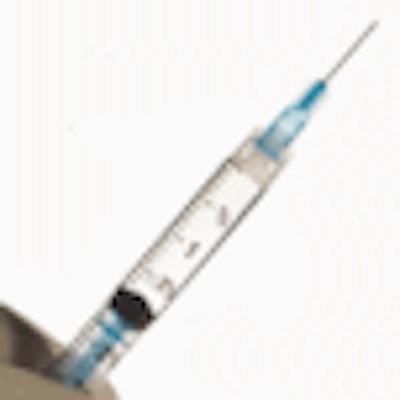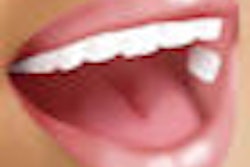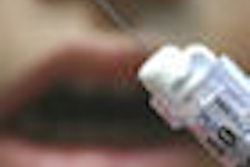
Enclosing local anesthetics in structures known as liposomes appears to reduce the discomfort of the injection and prolong the duration of the anesthesia. That was the report by a researcher from the Institute of Biology at the State University of Campinas in Brazil at the International Association for Dental Research (IADR) meeting in Toronto this month.
A team in the Institute of Biology's Biomembranes Laboratory has developed 2% and 3% liposome-encapsulated mepivacaine. Liposomes are tiny double-layered sacs that are biodegradable and nonimmunogenic. When used to carry medications, they have the potential to enhance the drugs' bioavailability, reduce their systemic toxicity, and increase their half-life, explained Giovana Tofoli, D.D.S., Ph.D.
She led a team that performed a double-blind, randomized crossover study that examined the efficacy of 2% and 3% mepivacaine carried in liposomes. This was the first study of these formulations in human dentistry, according to Dr. Tofoli. The team recruited 30 healthy volunteers and asked them to take no medications (except oral contraceptives) for a week before the study began.
Each volunteer received a 1.8-mL buccal infiltration in the upper-right canine of each of the following formulations, each at a separate session: 2% mepivacaine with 1:100,000 epinephrine, 3% mepivacaine, and 2% and 3% liposome-encapsulated mepivacaine.
The team found no significant differences in the time to onset of anesthetic effect produced by each formulation. However, the researchers did find a significantly longer period of pupal anesthesia with the 3% liposome-encapsulated mepivacaine than with 3% nonencapsulated mepivacaine or with 2% liposome-encapsulated mepivacaine. Use of the 3% liposome-encapsulated formulation also resulted in lower injection discomfort, as measured by a visual analog scale, than did the 2% nonliposome-encapsulated formulation.
In other studies presented by the researchers at the meeting, they showed liposome-encapsulated mepivacaine induced less inflammation in the oral mucosa of rats than the commercial formulation of epinephrine, and that it has pharmacokinetics similar to those of nonliposome-encapsulated mepivacaine.
Currently, the main barrier to commercializing mepivacaine liposomes is that the egg mixture used to create the liposomes is only stable for six months, Dr. Tofoli told DrBicuspid.com. She and her colleagues are working with a firm in Brazil to overcome this problem.
Daniel Haas, D.D.S., Ph.D., associate dean of clinical sciences and professor and head of anesthesia at the University of Toronto Faculty of Dentistry, attended Dr. Tofoli's IADR presentation. He said that the use of liposomes in dental anesthesia is an area worth looking into.
"It will be interesting to see whether they will play a clinical role or not," Dr. Haas noted.



















